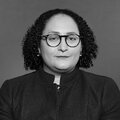Testimony of Ciara Torres-Spelliscy
Counsel, Democracy Program Brennan Center for Justice at NYU School of Law
On Clean Elections in New Jersey
Presented to the State Government Committee of the New Jersey Assembly
The Brennan Center unites thinkers and advocates in pursuit of a vision of inclusive and effective democracy. The Center’s mission is to develop and to implement an innovative, nonpartisan agenda of scholarship, public education, and legal action that promotes equality and human dignity, while safeguarding fundamental freedoms. The Center’s Democracy Program has been working in the area of campaign finance reform on the federal, state, and local levels since its inception in 1995.(1)
The Brennan Center would like to commend the New Jersey Legislature for continuing to expand New Jersey’s clean elections pilot program. We have watched with interest over the past few years as New Jersey’s pilot program has grown from two districts to the eight districts contemplated by the new legislation. We hope that in the future, the Legislature will expand the program to all legislative districts and consider offering public financing for other state offices. We also commend the Committee for expanding the funding available to include primary elections in the new legislation for the first time.
We would like to highlight two important areas of the law that you should consider amending. Firstly, you should consider amending Section 8, which requires:
a candidate intending to become certified and seeking nomination and election to the office of member of the General Assembly shall form a slate together with any other certified candidate or candidate intending to become certified, who is a member of the same political party in the same legislative district, and seeking nomination for elective office from that district.
This provision mandates that candidates seeking public financing must run as a team in order to receive a grant from the fund.
We feel that Section 8 may impose an unnecessary burden on candidates who wish to run a clean election. There is no guarantee that there will be an even number of candidates who would like to seek certification in a district. This provision therefore may in fact penalize some candidates who cannot form an agreement with others. Indeed, in the case of smaller third parties, this provision may create a special burden. Instead of fielding a single candidate in a participating district, a third party who wants the benefit of public financing must field two candidates, doubling the effort required. There is no case law precisely on point to give guidance on this policy choice. However, if this “slating” requirement is easier for incumbents to fulfill than for challengers, then this is not sound policy and could be viewed with skepticism.
Secondly, you should consider amending Section 11, which allows a participating candidate to withdraw from the public financing system. Under Buckley v. Valeo, in order for a public financing system to be constitutional, it must be voluntary. This bill would be voluntary even if Section 11 were deleted or amended. The voluntary choice each potential participating candidate has to make comes when she decides at the beginning of the election season whether she will run as a participating (publicly funded) or nonparticipating candidate (privately funded) candidate. Once this selection has been made, the candidate should abide by that decision. The only time candidates should be released from the public financing system is if they decide to suspend their candidacies altogether.
Moreover, the legislation already has built in “rescue funds” to ensure that candidates in competitive races are not roundly outspent. Allowing candidates to exit the system because their opponents have spent more money gives candidates the incentive to game the system and to abuse public funds. Also, if you retain this option of withdrawal, then any public funds given to the publicly financed candidate should be returned to the fund with interest. Otherwise, the candidate will have used the public financing system as a no-interest loan to kick-start his or her political campaign. This is not a prudent use of public funds, and therefore Section 11 should be changed.
Thank you again for your diligent work on this important issue. If you have further questions about campaign finance law or you need assistance with drafting, please contact me at the Brennan Center for Justice at NYU School of Law at 212–998–6025.
1.) The Center was part of the legal defense team in McConnell v. FEC, in which the United States Supreme Court upheld virtually all of the challenges to the federal Bipartisan Campaign Reform Act of 2002. Center attorneys have also successfully helped to defend numerous challenges to state campaign finance laws throughout the country, including Nixon v. Shrink Missouri Government PAC, 528 U.S. 377 (2000); Daggett v. Commission on Governmental Ethics & Election Practices, 205 F.3d 445 (1st Cir. 2000), and May v. Bayless, 55 P.3d 768 (Ariz. 2002) (en banc). We are currently helping the State of Connecticut to defend its public financing law in the case of Green Party of Connecticut v. Garfield. The Center has published four editions of Writing Reform: A Guide to Drafting State & Local Campaign Finance Laws, which provides comprehensive constitutional analysis of a wide range of campaign finance provisions. In addition, the Center also provides legal counsel, legislative drafting assistance, and commentary to citizens and elected officials interested in promoting campaign finance bills or initiatives. Attorneys from the Center also deliver testimony on campaign finance issues before Congress and state and local legislatures, as I am doing today.
